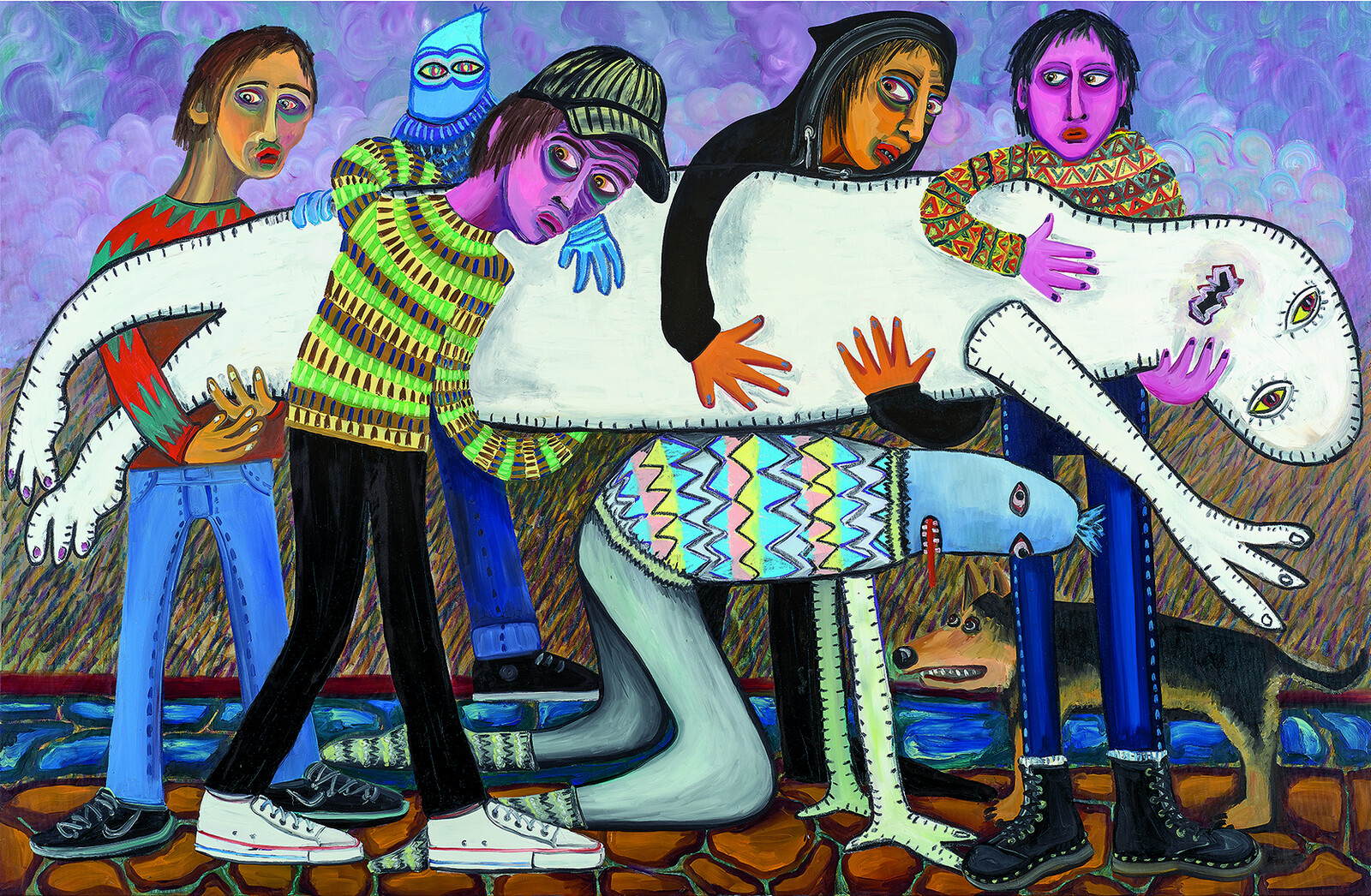July 22–September 11, 2022
Kottbusser Strasse 10
10999 Berlin
Germany
Hours: Tuesday–Sunday 2–7pm
presse@bethanien.de
Post-reunification Germany has emerged as an important forum for international painting. The generation of artists born in the 1970s and 1980s eschew alignment with collective tendencies and resist clearly definable influences. Meanwhile, their art has registered the cultural and sociological dislocations and divergences since the fall of the Iron Curtain with seismographic precision.
DISSONANCE: Platform Germany, edited by Mark Gisbourne and Christoph Tannert, is a book published by DCV that surveys 81 artistic positions in the field of painting in Germany. Following the publication of the book, Künstlerhaus Bethanien is now presenting a first exhibition with 40 selected positions:
Tom Anholt, Mona Ardeleanu, Inna Artemova, Emmanuel Bornstein, Fritz Bornstück, Mona Broschár, Claudia Chaseling, David Czupryn, Ivana de Vivanco, Annedore Dietze, Rao Fu, Philipp Fürhofer, Nicholas Grafia, Lennart Grau, Philip Grözinger, Oska Gutheil, Dominik Halmer, Roey Victoria Heifetz, Uwe Henneken, Gregor Hildebrandt, Franziska Holstein, Igor Hosnedl / Klaus Jörres, Hortensia Mi Kafchin, Yongchul Kim, Kanta Kimura, Markus Matthias Krüger, Tegene Kunbi, Katsuhiko Matsubara, Justine Otto, Grit Richter, Adam Saks, René Schoemakers, Sebastian Schrader, Sebastian Tröger, Steve Viezens, Marc von der Hocht, Ruprecht von Kaufmann, Paul Wesenberg, and Sahar Zukerman
It is often argued that any selection of artists must follow a previously validated discourse so as to ensure its meaningfulness, in much the same way that cities and municipalities choose the beneficiaries of their graves of honour. The selection process adopted by editors Mark Gisbourne and Christoph Tannert was consistently guided by the chronological watershed of 1972, and was otherwise interested in voices which are not yet known to the general public and which, in one or two cases, are still too little-known even among the professional audience. The editors of DISSONANCE: Platform Germany dare to pass judgement, reveal the unexpected and look for the added value of aesthetically thrilling performances of programmatic plurality, some of which are still in the process of exploring the relevant meanings they can add to painterly practice. If this publication were to be read as a scene of the crime or an uncovered bill of exchange for future developments, its claim will have been fulfilled.
With the kind support of the Senate Department for Culture and Europe of the State of Berlin.
We would like to thank all galleries for their exceptional contributions: Gisela Clement, CRONE, Eigen+Art, FORSBLOM, Thomas Fuchs, Robert Grunenberg, Max Hetzler, MARIO IANNELLI, Jarmuschek, Judin, Kornfeld, Gebr. Lehmann, CHRISTIAN LETHERT, Loock, LULLIN + FERRARI, Meyer Riegger, ALEXANDER OCHS PRIVATE BERLIN, PSM, REITER, SEXAUER and Wentrup.
Postscript
This book was written in a time of pandemic. We do not know whether there is any legible evidence in young German painting of the social and emotional upheavals it has triggered in our society. But we do know of course that, traditionally, painting does not react directly and immediately to social change. And besides, ‘Corona’ might not bring about any social change after all.





